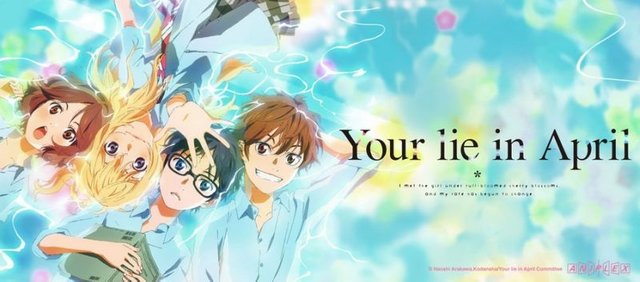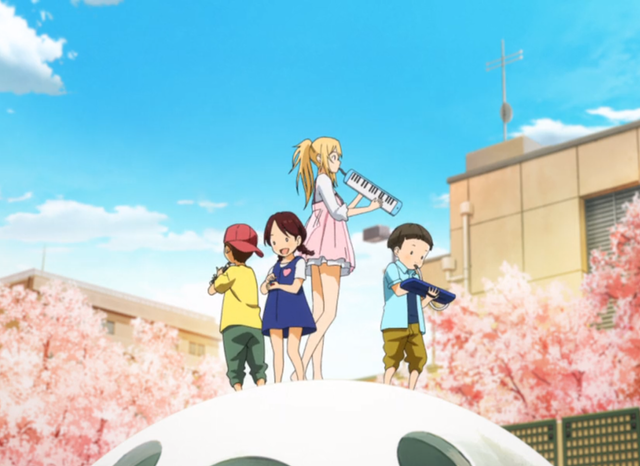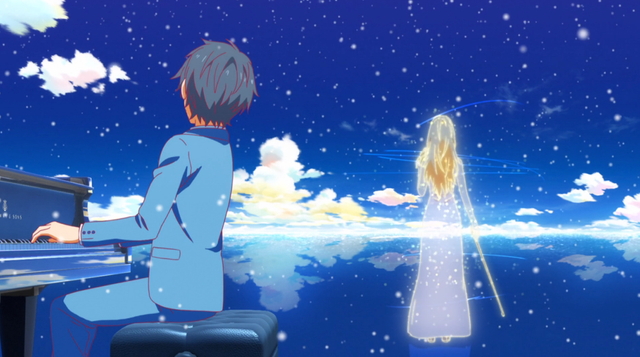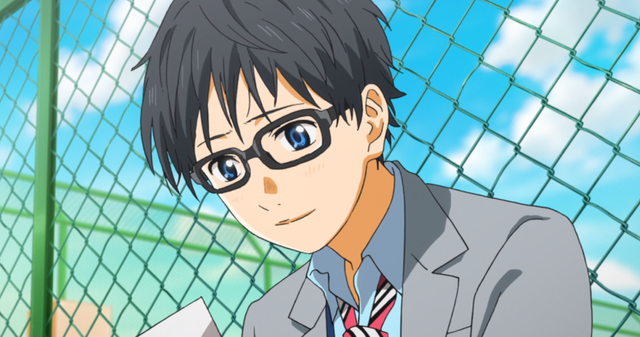Deconstructing an Anime Manic Pixie Dream Girl

Manic Pixie… what?
In 2007, a film critic for The A.V. Club, Nathan Rabin, began a running feature he titled “My Year of Flops”, where he would examine movies that financially or critically bombed to theorize on whether they were failures, fiascos, or secret successes. He elected to begin with his critique of Cameron Crowe’s Elizabethtown, a rom-com that paired Kirsten Dunst and Orlando Bloom. In it, he coined the term “Manic Pixie Dream Girl”, which he described as:
The Manic Pixie Dream Girl exists solely in the fevered imaginations of sensitive writer-directors to teach broodingly soulful young men to embrace life and its infinite mysteries and adventures. The Manic Pixie Dream Girl is an all-or-nothing proposition. Audiences either want to marry her instantly (despite The Manic Pixie Dream Girl being, you know, a fictional character) or they want to commit grievous bodily harm against them and their immediate family. – (Rabin)
A Manic Pixie Dream Girl is generally a free spirit that sweeps into the protagonist’s life with a flourish and immediately captivates his attention. She’ll be happy, zany, and otherwise highly emotional, almost like a child instead of a woman. All of her concerns are generally external, and involve journeys or adventures to accomplish, which will require a joie de vivre that’s practically inhuman.
While Rabin coined the term, he acknowledges that the concept had existed in cinema for some time, and the A.V. Club even compiled a list to imply that the first Manic Pixie Dream Girl (or MPDG) was in 1938’s Bringing Up Baby. Filmmaker Zoe Kazan argued against the term, especially on how it was being applied to creative work instead of remaining in criticism where it belonged, dismissing MPDGs as a “term invented by a blogger” (a comment that implies derision toward critics, even when Nathan Rabin’s film criticisms are generally respected). However, Kazan overlooks or ignores that the culprit in MPDGs are male screenwriters creating their ideal woman who can be waved away once their sad sack protagonist has been fixed. Also, once the term went wide, the trope became a watchword for screenwriters and has largely disappeared from new American films.
Also, it must be taken into account that MPDGs are exclusively fictional characters, and that they rarely stay MPDGs in anything longer than 120 minutes as character development starts to fill in the lines and the character begins to cross the line from fantasy to three-dimensional character. (The series New Girl is a prime example of this, as Jess becomes a more realized character over the course of the seasons as her male roommates get to know her as a person.) The perception of them is primarily from that of the protagonist, so it must be stated that the view of the MPDG is from a generally male perspective centered around wish fulfillment, otherwise any quirky woman could be incorrectly labeled as an MPDG.
There’s Always Anime…
MPDGs have been, at least as film criticism goes, been thought of as distinctly American in creation and portrayal, but the trope can be found in many other cultures. Japanese anime, for example, was easily able to integrate MPDGs into its greater canon alongside other tropes such as tsundere (e.g. “Okay, I’ll help, but it’s not like I like you or anything!”) and all of the other -dere tropes which are usually applied to female characters. It’s understandable that MPDGs would slide in so easily, as they were a stock romantic-comedy character type created primarily as a form of wish-fulfillment, which is what many stock female character types in anime tend to be.
The anime Your lie in April serves a prime example of the MPDG in Kaori, a fourteen year old violinist who’s just as free spirited on stage as she is off, and in the tradition of many American MPDGs, is largely defined by her love of music and carpe diem attitude, and little else. Her entrance is brief, merely a shot of her talking to a kitten and feeding it French pastries, nothing more than an establishing shot so that you’ll remember her later once the series moves on. The focus shifts immediately onto Kousei: a brooding, depressed, tragically self-loathing world-class musician (also only fourteen years old) who’s lost all passion in his life, and moves through it in an almost robotic fashion, exactly the type of male lead that an MPDG develops a radar lock on.

The first time Kousei sees Kaori is her at peak MPDG, standing barefoot on top of a jungle gym with three children, playing a melodica in a cheery tune to attract pigeons to dance for them. It’s a scene that encapsulates an MPDG as quirky, as free-spirited, as a soul conducted by perky music, as innately trusted by children because she is so childlike herself. Her emotions are wild, with no impulse control, set in opposition to the slogging lead, who’s partially awoken from his funk by her freeform style of music and playing to play in a crowd-pleasing manner even though it’s a competition that rewards accuracy. That it is later revealed that this was all arranged in advance is said to undermine her MPDG status, but that the revelation is in the final moments of the series can damage that argument’s credibility.
It can be posited that Kaori, as well as every other MPDG character, are simply quirky, free-spirited women, which can be supported simply by adjusting the focus of the work. Show Elizabethtown from the perspective of Kirsten Dunst’s character, and her inner life and motivations are likely to be explored. Zooey Deschanel’s character in New Girl is a MPDG from the word go, until additional attention is given to her life and to motivations for her attitudes and behaviors, as well as her ambitions and desires in life to add further complexity. The same occurs for Kaori as Your lie in April progresses and gives more scenes exploring Kaori by herself, but the fact that they usually show her in pain, or further succumbing to her illness, builds the strength of the characterization as MPDG based on one requirement of the trope: limited audience exposure.
The Expiration Date of the MPDG
No Manic Pixie Dream Girl can remain so for long, as she’s more a fantasy than an actual person, and the greater amount of time that she resides in the story, the more likely the fantasy will fade to reveal the real and complex woman beneath. As mentioned above, it’s rare for an MPDG to last longer than 120 minutes, because that’s the common length of a film. An MPDG doesn’t last past the credits because even if the male lead ends up with her, the realities of the relationship will set in once the infatuation high fades, because infatuation is mostly about the feelings of one person, in this case the male lead. In the case of Kaori and Kousei, Kousei is infatuated upon first seeing her, and further so upon hearing her play. He acts as if he were in love with her despite not knowing where she lives, or her phone number or email address (any of which could simply be asked for, but it never comes up), and even when she’s in the hospital, it’s more about him remembering/bothering to visit her than risking further development of her backstory. With MPDGs, if a relationship is going to begin in earnest, it’s likely the credits will roll soon afterward, or the relationship will be with someone else while the MPDG skips off into the sunset to perky indie bands.
It’s considered that Kaori is against the normal type of the MPDG as she’s afflicted with a terminal disease, one that’s never named in series but inspired countless fans to start internet sleuthing to determine what she had.
At the end of the day, it’s never named because it didn’t matter what she had. Kaori had to die, from a writer standpoint, because Kousei was “fixed” and his tsundere neighbor was finally ready to pursue him romantically. At that point, Kaori was only going to stand as an obstacle to the tsundere neighbor, or a drag on Kousei as he progressed forward. Kaori had to die to remain his beautiful muse-memory, forever fourteen and fantasy.

It’s an uncommon route to take, but isn’t unheard of, as Sweet November and Autumn in New York both went the same route to have the romantic leads fall in love with terminally ill women who were quirky as Hell, and the men’s dour existence would be brightened and “fixed” just in time for the MPDGs to die. Again, if the stories were told with the women as the primary perspective, it’d be less a manic pixie as a woman fighting to enjoy every last breath as she realizes she’s on borrowed time.
Even Kaori’s death lines up with the MPDG status, as she elects for dangerous, life-threatening surgery for the shot at having a short amount of time to play the violin, but not for herself, but for Kousei. She literally gives her life for the opportunity to play with him one last time to inspire him, and as a result Kousei plays alone, for her, and delivers the performance of his career and is “fixed”. He’ll mourn her, of course, and remember her, but she still dies young, her focus, like all of the women in Kousei’s life, on helping or fixing Kousei.
It applies to the American MPDGs as well, as they’re not alone among the women that seem to exist solely to “fix” the brooding Byronic hero, they’re just the most successful because she’s nothing more than a fantasy until she isn’t, and then you end the story or shuffle her off stage.
Either that, or you just kill her. But it’s okay, since, after all, the hero will be all right.

Woah...I mean, just wow. I don't think I've ever been that entranced by an article in my life. Well done.
I honestly wasn't much of a fan of this anime in particular. It felt somewhat wrong how it set up the first half of the show as this story about redemption and rehabilitation and then crushed my hopes and dreams in the second half. But seeing this context of Kaori being a sort of literary guardian angel of sorts, it gives the whole experience a far more digestible perspective.
Yeah, absolutely incredible article. Blew my mind nonstop and I can't wait to read more from you.
Thank you very much for the kind words. It is pretty easy to peg Kaori as a Mani Pixie Dream Girl, but generally there's pushback against the term both because it's often misused, and it implies lazy writing. The fact that there are so many unnecessary facets to this show (Why was the tsundere storyline for the neighbor needed at all? Why bring in the younger kid who hated him only for her to fall for him in like... 3 episodes? It was bordering on harem anime at one point...) implies artificial lengthening, because if you spend too much time on Kaori you either have to flesh her out further, eliminating the fantasy aspect, or she becomes a rather flat and shallow character.
I won't even go into how most of Kousei's drama never feels earned. It portrays his mother as abusive and cruel but spends the back half making her out to be mother of the year.
Hi vaughndemont,
LEARN MORE: Join Curie on Discord chat and check the pinned notes (pushpin icon, upper right) for Curie Whitepaper, FAQ and most recent guidelines.
Thank you so much! It's always a distinct pleasure to be recognized by the amazing @Curie community. Thank you for continuing to support quality content here on Steemit. :)
I cry thinking of this anime. Its amazingly beautiful.